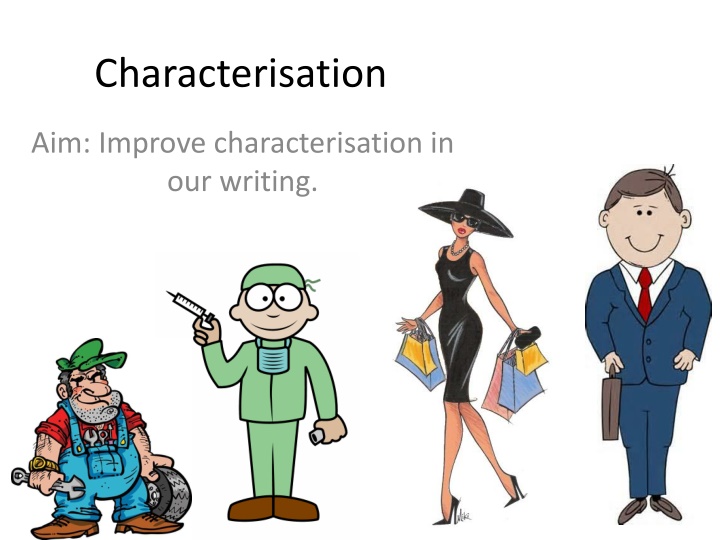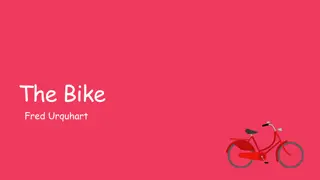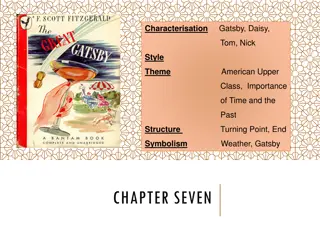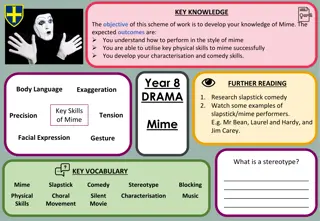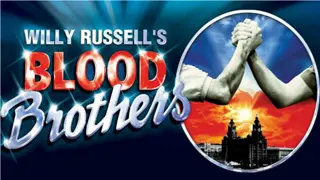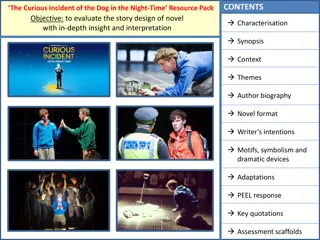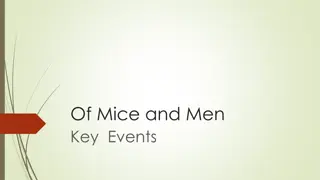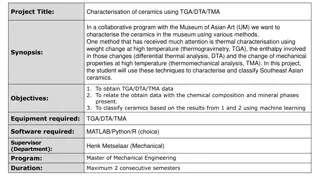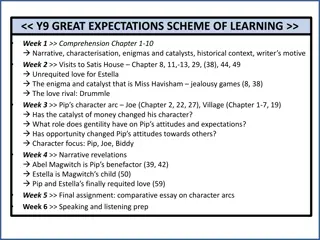Characterisation
Improve the depth and authenticity of characters in your writing by mastering various characterisation methods like direct and indirect characterisation. Learn how actions and appearance can reveal emotions and traits, creating relatable and believable characters in your stories.
Download Presentation

Please find below an Image/Link to download the presentation.
The content on the website is provided AS IS for your information and personal use only. It may not be sold, licensed, or shared on other websites without obtaining consent from the author.If you encounter any issues during the download, it is possible that the publisher has removed the file from their server.
You are allowed to download the files provided on this website for personal or commercial use, subject to the condition that they are used lawfully. All files are the property of their respective owners.
The content on the website is provided AS IS for your information and personal use only. It may not be sold, licensed, or shared on other websites without obtaining consent from the author.
E N D
Presentation Transcript
Characterisation Aim: Improve characterisation in our writing.
What is characterisation Is the concept of creating characters in a story. Effective characterisation makes a literary character realistic and believable. Direct characterisation explaining the character to the audience. Indirect characterisation showing the reader the character through his thoughts/speech /appearance/action.
Pieta Michelangelo What is the man doing? What is the woman doing? What can we tell about their relationship? An example of indirect characterisation .
Actions to show emotion The little boy was crying. His trembling bottom lip hung down, his shoulders shook violently and hot, fat tears rolled down his cheeks.
Actions to show emotion The little boy was scared. Describe the reaction his body would have to this emotion. Do not state that he was scared.
How characters move The man was lazy. He stretched lethargically over his bulging stomach to reach the remote. He gave up straining. He lazily picked the crisps from his teeth with a dirty finger. He d get it later.
How characters move He was in a rush. Without stating that he was in a rush, describe how his movements might demonstrate this idea.
Appearance What assumptions come to mind when you see the way this man is dressed? Rather than stating he is a businessman , it is much more effective to describe the way he is dressed and allow the audience to figure it out for themselves.
Appearance He checked his watch for the twelfth time that minute, readjusted his tie and smoothed his immaculate pinstripe suit. His briefcase hung heavy by his side and his highly- polished shoes glinted under the fluorescent lights.
Appearance Your Turn What does this woman do? Describe her appearance (and mannerisms, if you like), making her occupation clear, without actually stating that she is a doctor.
Your Task Using the worksheet provided, you should demonstrate your skills at creating believable characters and using characterisation effectively. Remember to show rather than state what your character is like.
